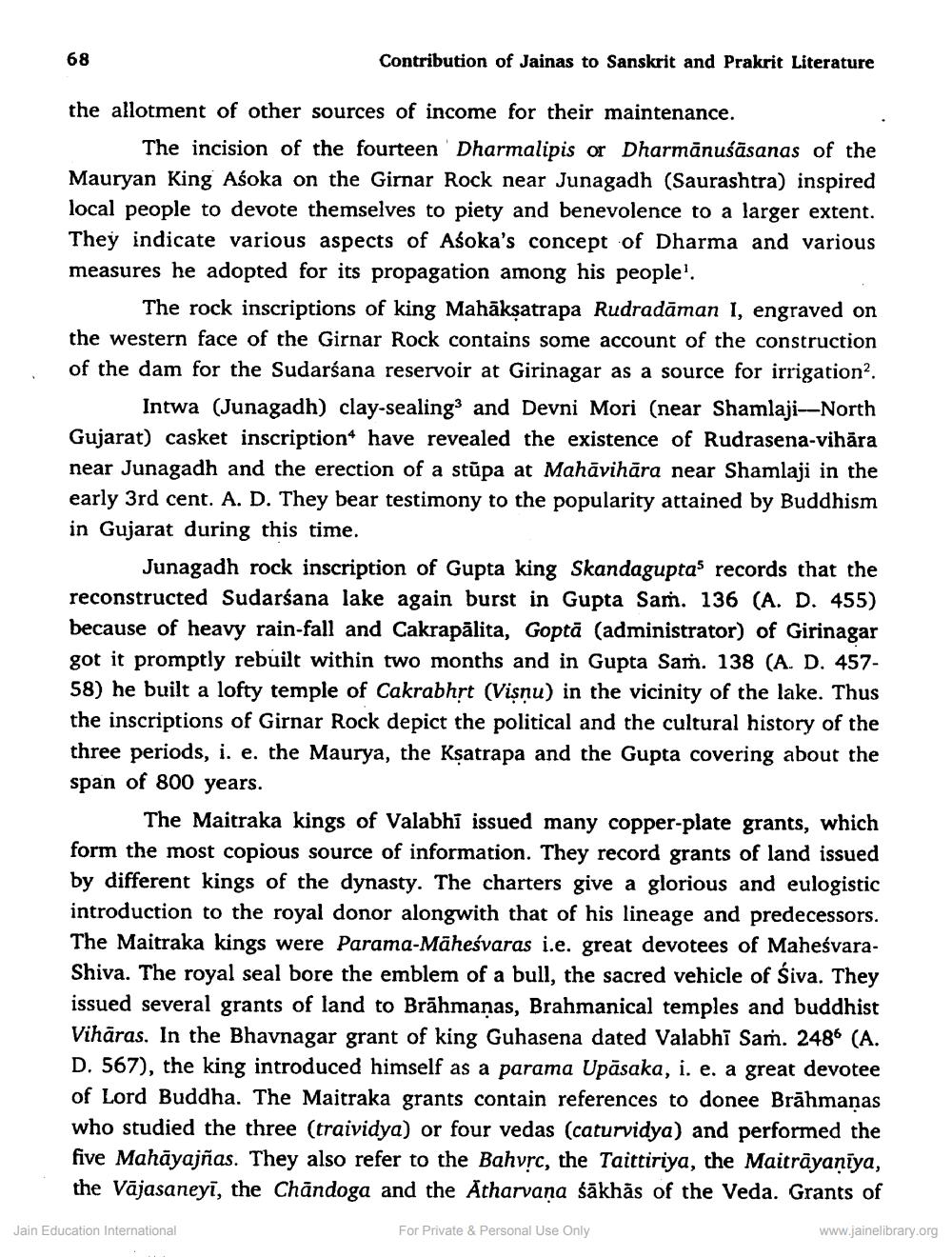________________
68
Contribution of Jainas to Sanskrit and Prakrit Literature
the allotment of other sources of income for their maintenance.
The incision of the fourteen Dharmalipis or Dharmanuśāsanas of the Mauryan King Aśoka on the Girnar Rock near Junagadh (Saurashtra) inspired local people to devote themselves to piety and benevolence to a larger extent. They indicate various aspects of Asoka's concept of Dharma and various measures he adopted for its propagation among his people!
The rock inscriptions of king Mahāksatrapa Rudradāman I, engraved on the western face of the Girnar Rock contains some account of the construction of the dam for the Sudarsana reservoir at Girinagar as a source for irrigation?.
Intwa (Junagadh) clay-sealing and Devni Mori (near Shamlaji--North Gujarat) casket inscription* have revealed the existence of Rudrasena-vihāra near Junagadh and the erection of a stūpa at Mahāvihāra near Shamlaji in the early 3rd cent. A. D. They bear testimony to the popularity attained by Buddhism in Gujarat during this time.
Junagadh rock inscription of Gupta king Skandagupta’ records that the reconstructed Sudarśana lake again burst in Gupta Sam. 136 (A. D. 455) because of heavy rain-fall and Cakrapalita, Goptā (administrator) of Girinagar got it promptly rebuilt within two months and in Gupta Sam. 138 (A. D. 45758) he built a lofty temple of Cakrabhrt (Visnu) in the vicinity of the lake. Thus the inscriptions of Girnar Rock depict the political and the cultural history of the three periods, i. e. the Maurya, the Ksatrapa and the Gupta covering about the span of 800 years.
The Maitraka kings of Valabhi issued many copper-plate grants, which form the most copious source of information. They record grants of land issued by different kings of the dynasty. The charters give a glorious and eulogistic introduction to the royal donor alongwith that of his lineage and predecessors. The Maitraka kings were Parama-Māheśvaras i.e. great devotees of MaheśvaraShiva. The royal seal bore the emblem of a bull, the sacred vehicle of Śiva. They issued several grants of land to Brāhmanas, Brahmanical temples and buddhist Vihāras. In the Bhavnagar grant of king Guhasena dated Valabhi Sam. 2486 (A. D. 567), the king introduced himself as a parama Upāsaka, i. e. a great devotee of Lord Buddha. The Maitraka grants contain references to donee Brāhmanas who studied the three (traividya) or four vedas (caturvidya) and performed the five Mahāyajñas. They also refer to the Bahvrc, the Taittiriya, the Maitrāyaniya, the Vājasaneyī, the Chándoga and the Atharvana śākhãs of the Veda. Grants of
Jain Education International
For Private & Personal Use Only
www.jainelibrary.org




